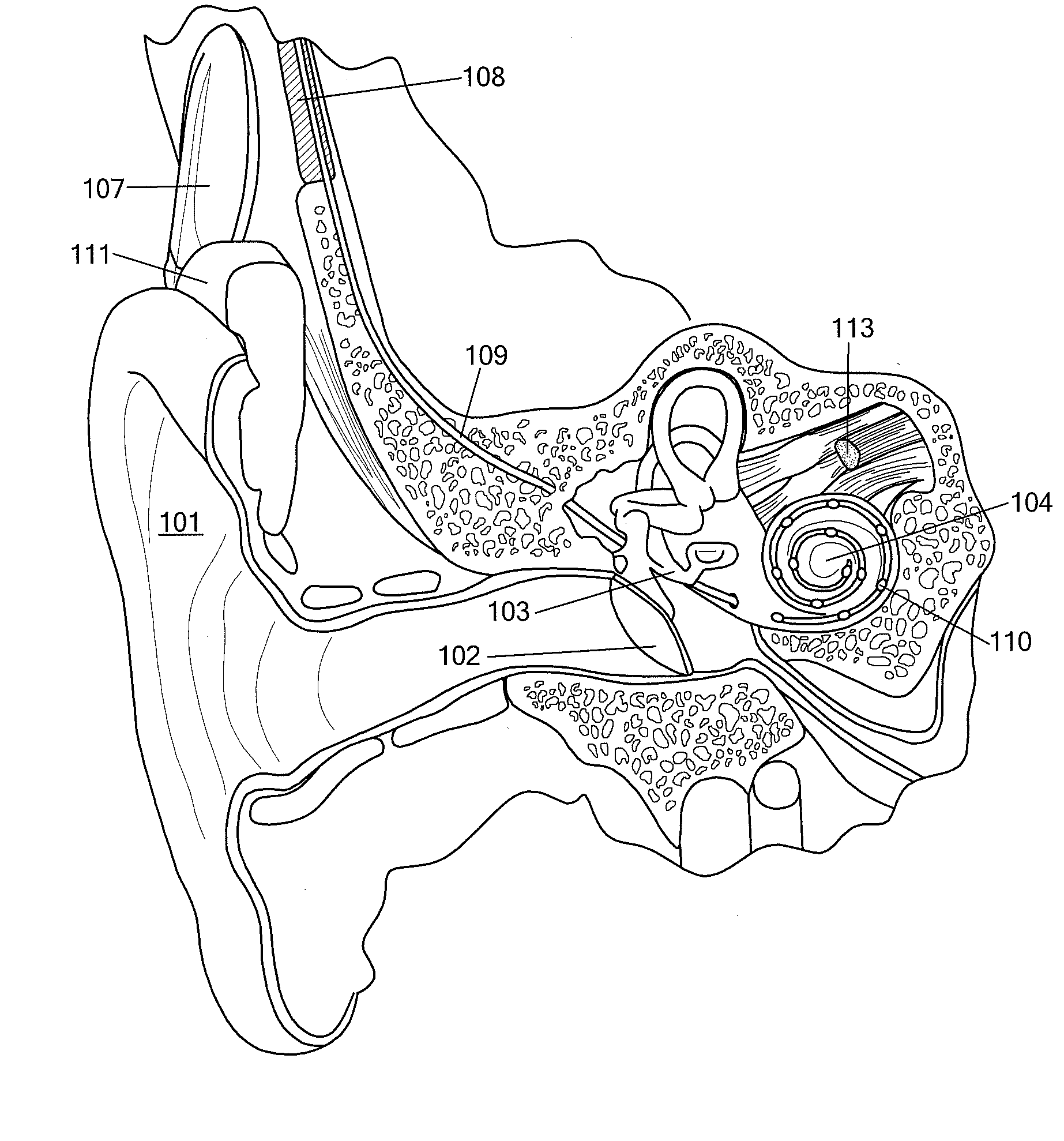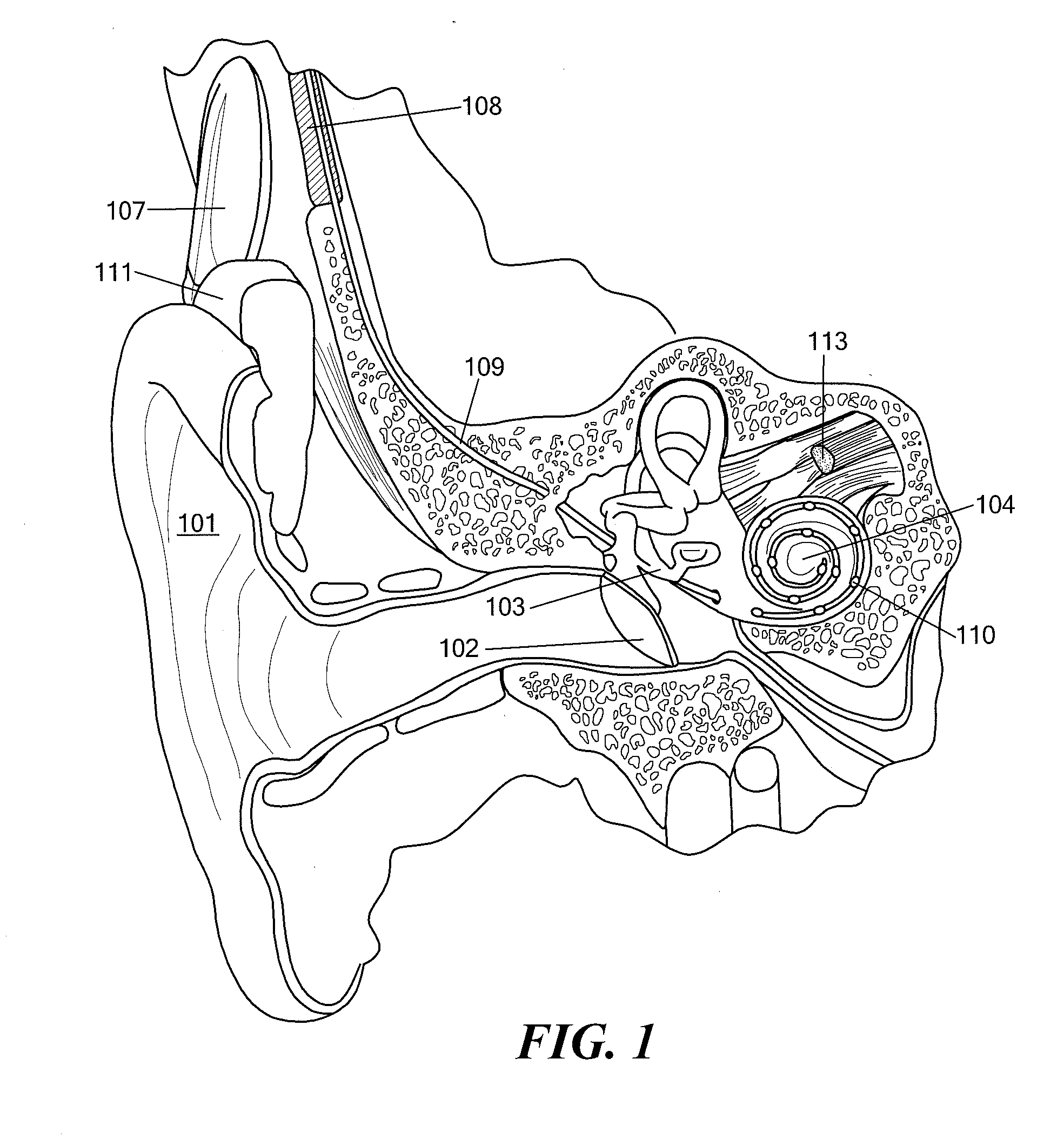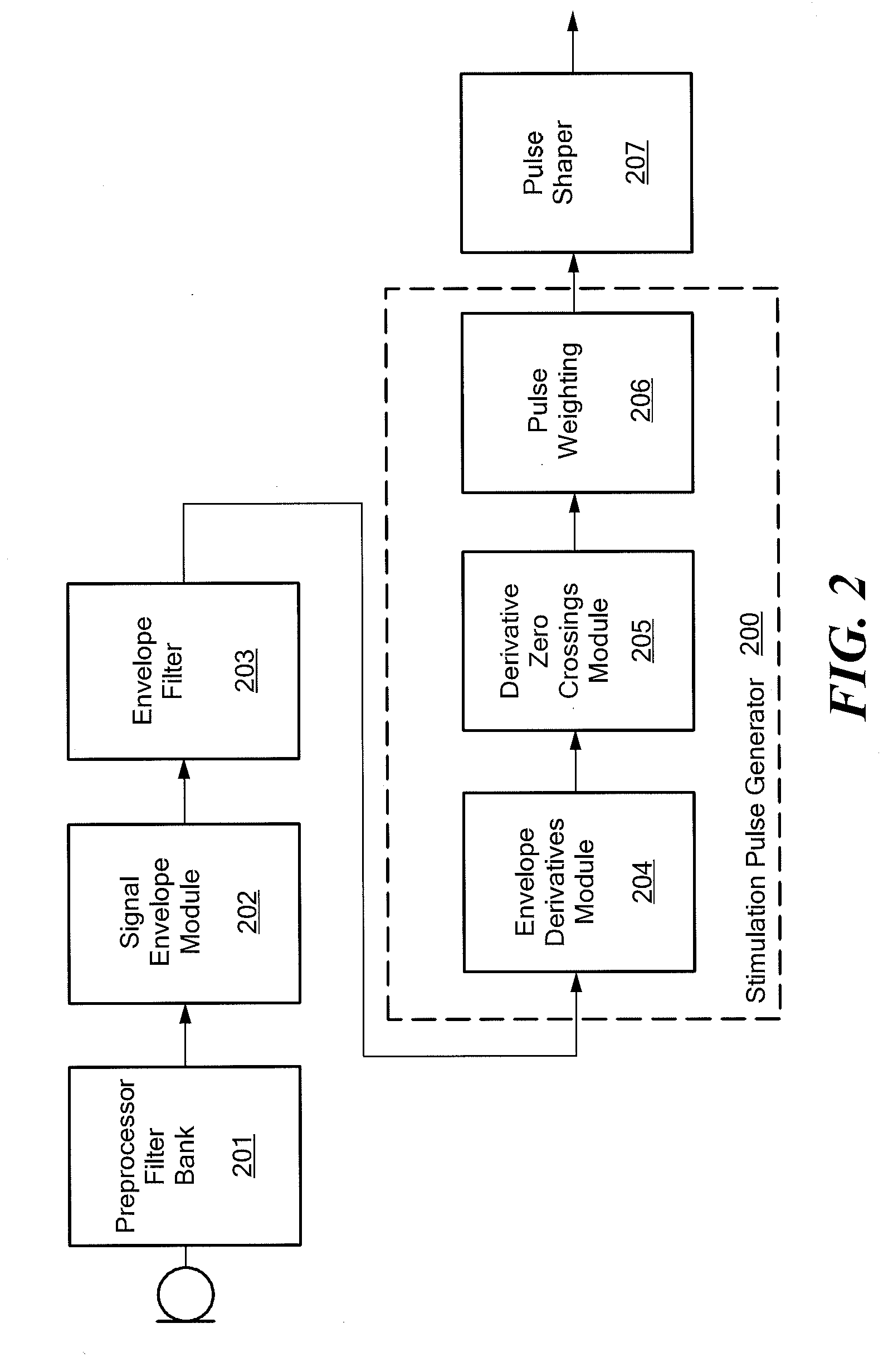Envelope Specific Stimulus Timing
a stimulus timing and envelope technology, applied in the field of cochlear implants, can solve the problems of limited current amplitude, imperfect existing stimulation strategies, and inability to arbitrarily shorten phase durations,
- Summary
- Abstract
- Description
- Claims
- Application Information
AI Technical Summary
Benefits of technology
Problems solved by technology
Method used
Image
Examples
Embodiment Construction
[0032]Various embodiments of the present invention are directed to an improved approach for signal processing in a cochlear implant system where the stimulus timings and amplitudes are adapted to the envelope of each channel's band pass signal. Then points in time and amplitudes that are important for neural coding are selected for stimulating.
[0033]The presentation of the fundamental frequency of an audio signal also is improved. Unresolved harmonics of the fundamental frequency can be contained in a signal channel if the bandwidth of the channel is greater than the fundamental frequency. When two or more harmonics are contained in a frequency band, then they are called unresolved harmonics, which lead to a beating frequency of the signals envelope in this channel, with a beating frequency that is dominated by the fundamental frequency. Embodiments of the present invention apply pulses with a pulse rate that is correlated to the fundamental frequency in channels with unresolved har...
PUM
 Login to View More
Login to View More Abstract
Description
Claims
Application Information
 Login to View More
Login to View More - R&D
- Intellectual Property
- Life Sciences
- Materials
- Tech Scout
- Unparalleled Data Quality
- Higher Quality Content
- 60% Fewer Hallucinations
Browse by: Latest US Patents, China's latest patents, Technical Efficacy Thesaurus, Application Domain, Technology Topic, Popular Technical Reports.
© 2025 PatSnap. All rights reserved.Legal|Privacy policy|Modern Slavery Act Transparency Statement|Sitemap|About US| Contact US: help@patsnap.com



